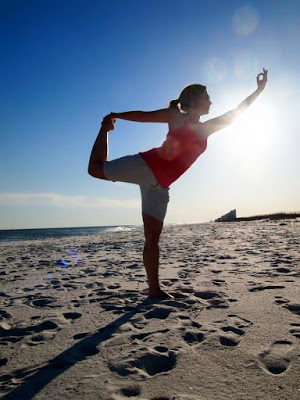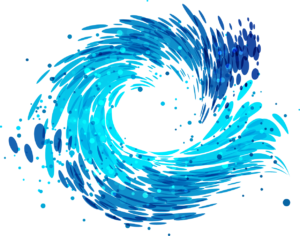by Baxter
 |
| Star Rosser, Age 52 |
Before I make recommendations on who should avoid or be cautious with back-bending the spine, I’d like to briefly discuss “spinal extension.” Spinal extension is the movement required for essential active backbends such as Cobra and Sphinx poses (Bhujangasana), Locust pose (Salabasana), Bridge pose (Setubandha Sarvangasana) and Warrior 1 pose (Virabradrasana 1), as well as all supported backbends. The areas of your spine that have the greatest ability to “extend” (go into a backbend) are, in descending order, the neck (cervical spine), the lower back (lumbar spine) and the rib cage spine area (thoracic spine).
Who should avoid back bending poses? Those with:
- Lumbar facet arthritis.
- Lumbar spondylolisthesis, a condition where the vertebrae bone above slides forward of the one below.
- Chronic low back pain that worsens with backbends.
- Anxiety that worsens with backbends.
- Cervical arthritis (if you need to avoid taking your neck and head back)
- Vertigo that is sensitive to extension of the neck
- Osteoporosis. Avoid extreme backbends.
- Wedge fractures. Avoid all backbends, even shallow ones.
- Abdominal hernias or diastasis recti (abdominal wall separation).
- Untreated hypertension (high blood pressure). Avoid longer holds of active backbends. Supported backbends (such as Bridge pose on a block) or restorative backbends are fine.
Follow Yoga for Healthy Aging on Facebook ° To order Yoga for Healthy Aging: A Guide to Lifelong Well-Being, go to Amazon, Shambhala, Indie Bound or your local bookstore.


I was under impression that with wedge fractures, forward bends are to be avoided, not backbends. Are even shallow backbends contraindicated? Wouldn't mild backbends prevent more rounding of the spine and thus risk of more wedge fractures?
This comment has been removed by the author.
While it is true that those with Osteoporosis and wedge fractures of the thoracic spine need avoid forward bending of the spine, I feel they also need to be very cautious of back bending as well. Since most of these students will have an obvious forward curve of the spine while sitting or standing, known as kyphosis, the first order of business should be to simply work on improved overall posture and working with upward elongation of the spine, as we do in Mountain Pose. I do think you could introduce very gentle, mild backbends, as long as they do not precipitate pain, and see how the person progresses. —Baxter
This comment has been removed by the author.
Thank you, Baxter. Makes sense, it's always good to be cautious.
Is it OK to include backbends for a person suffering from osteophytes?
Osteophytes are also known as bone spurs. Bone spurs are bony projections that develop along the edges of bones, often where bones meet each other at your joints. This includes the vertebrae of the spine. The main cause of bone spurs is the joint damage associated with osteoarthritis. Most bone spurs cause no symptoms and may go undetected for years. However, if you or a student of yours has symptomatic pain from arthritis of the spine where there are bone spurs present, and that pain is made worse by back bending, then I would recommend avoiding them. —Baxter
Thanks Baxter!